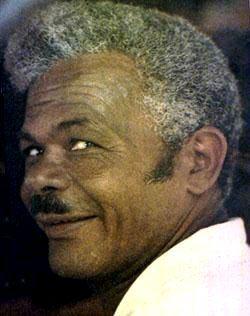Capoeira. You, dear reader, may have never heard of it, or maybe you’re one of the legion who can pick up a berimbau and play the toques, handle the pandeiro (a tambourine, kind of) and atabaque (a conga, kind of), sing the ladainhas and chulas, enter the roda… expertly perhaps, but more likely with more enthusiasm than expertise.
It’s no different here in Bahia, where capoeira was born. This Bahian capoeira has made it from the sugarcane plantations of the Recôncavo to college campuses worldwide, from Santo Amaro to San Francisco…Europe, Asia…it’s everywhere.
Or is it? I’m not so sure. Capoeira’s origins are obscure and almost everything about it is polemical. For some it’s quasi-religious and like religion there are those who claim the Truth unto themselves, this often enough born less of respect than of self-aggrandizement. How many little dictators are out there right now scattered across the towns of Europe and the U.S., playing the role of capoeira prophets to earnest and well-meaning students, taking their money (and more) while beating their (own) chests and crowing “Eu sou da Bahia! (I’m from Bahia!)”, as if that were enough to make them special.
Bahia, like everywhere else in the world, has its ample share of deadbeats and dissimulators, and capoeira more than its share. Most of the real masters here have stories of being invited to workshops outside of Brazil and meeting “masters” who were nothing more than students here and whose mastery was acquired (via closer proximity to the orixás?) during the plane trip to wherever it was they were going. They call them mestres de aeroporto…airport masters…
This is the theme of a screenplay currently in development — Malandro — with Seu Jorge slated for the title role as a Pelourinho good-for-nothing who has gone to Europe to set himself up as The Master, only not to have things work out as he expected.

Capoeira made it to Rio by the turn of the twentieth century, taken by the same Bahian exodus which took samba to Rio. It became a vicious street fight where straightrazors were sometimes wielded between toes to add slash-and-gash to capoeira’s great roundhouse kicks.
Capoeira was the fighting-style of choice of Madame Satã (Madam Satan), Lapa’s most feared thug, probably the world’s toughest ever transvestite.

But capoeira is like jazz…hard to define, different people having different ideas of what it really is, or if something really is it or not (what Nicholas Payton of New Orleans plays would be jazz to most people, but to him it’s simply New Orleans music, jazz having become so wide a term that it’s almost meaningless nowadays).
For me, as with samba, if you take the Recôncavo out, it’s not “it” anymore. The overriding ethos of the Recôncavo in terms of its people’s arts (and by people I mean the majority of its population…enslaved) was an aspiration to life and living, a moving away from the hopelessness and depression which would be natural to people forced into their position…the essential key to Brazilian music, the pervasive joy — almost a meta-joy — beneath it. This isn’t the joy of somebody who’s gotten a raise…this is the joy of somebody from whom everything has been taken but life itself, and who is determined to nevertheless live that life.
The music of capoeira, traditionally, was the folk songs — the chulas — sung by people in the rodas de samba. Capoeira, like samba, was a collective endeavor of friends and neighbors. Like samba, it was done in a circle. Even now, to hear capoeira played to these songs heartfully rendered is something powerfully moving, an affirmation…it’s emotion felt in common.
So in my book, razor-swinging feet is not capoeira (we’ll give a pass to Madame Satã ; ). Nor are athletic gyres and somersaults by well-muscled “capoeiristas”. There’s plenty of “capoeira” right here in Bahia which as far as I’m concerned is not capoeira at all. And with the right people, there can be capoeira as real-deal as it gets anywhere there are people to play it. In capoeira, it’s not whether you win or lose, and it’s not even how you play the game…it’s why you do it.
Our dear friend Simon Brook’s capoeira screenplay (referred to several paragraphs above) for Chic Films (they co-produced the Grand Prix winner A Prophet — Un Prophete — at Cannes several years ago) is tied up in development, so for anybody accustomed to reading screenplays, we give you our own story of Harlem homeboy Zoom, ashamed of his real name “Zumbi”, ashamed of the music in his father’s 125th St. record shop (his father is an immigrant from Bahia, Brazil), ashamed of his heritage but forced by circumstances to journey straight to its heartland and convince his father’s father (an old guard capoeira master beholden to Xangô, Ogun, Oxossi, et al) to make the journey of his lifetime, to New York City.
And how’s this for a switch? Our real record shop — Cana Brava — was based on our fictional record shop in the “movie”! If you get into that roda camará, you better watch out…you better be careful camará, because you’re in a dangerous place and…
